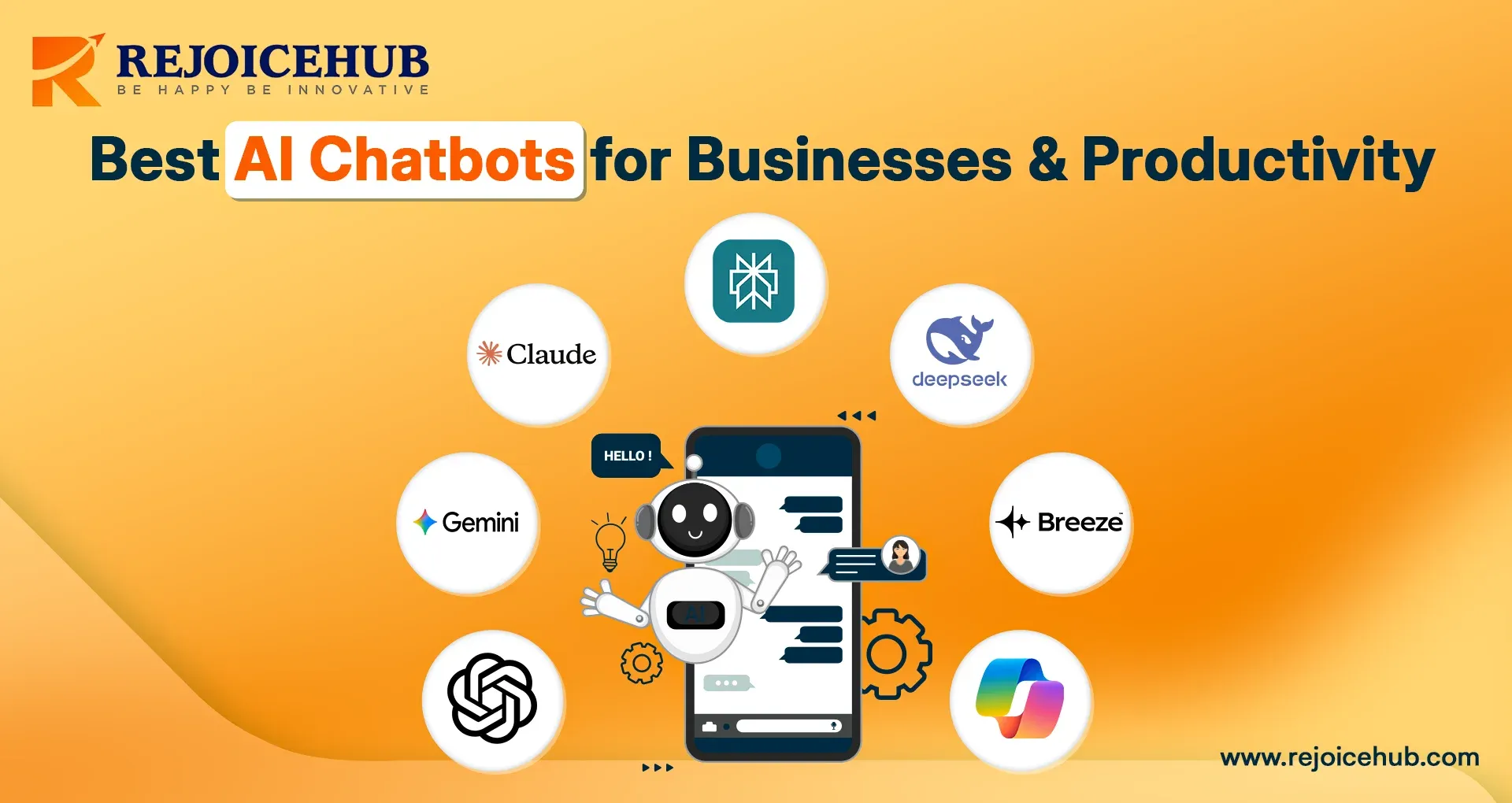
In 2025, we saw a lot of advancement in the Artificial Intelligence sector, be it the release of new LLM models or the improvement of Generative AI and Natural Language Processing; all these developments are taking humans towards a universal AI system in which Artificial Intelligence will handle everything from the basic tasks of the morning to the most complex functions of the day.
I first used Conversational AI when new models were coming into the market, then many of my colleagues said that these models will be limited to conversational and will react like a "Quick Encyclopaedia" up to a point, but today in 2025, we find AI Chatbots and agents available in the market for everything from writing to autonomously driving a car, and the market for this AI is growing drastically at 22% CAGR, and it has already created a market of billions of dollars,
But still, many people have a question about which AI Chatbot or Agent is best for their businesses. Today, let us answer your doubt in detail with a different perspective, and I will try to solve all your questions related to AI chatbots.
Quick Summary
Earlier, most of the cost of all industries was in the customer service support sector, so that they could manage their customers, and despite having human assistants, the overall customer experience of the people was very bad, because the customer had to wait for hours to talk to the customer service, but since the LLMs model has come, Chatbots and AI Agents have become very advanced.
In 2025, Chatbots have become so advanced that they are being used in almost all sectors, mostly AI chatbots are used for customer support and repetitive work.
Our Focus in this article:
1. Chatbots kya hota hai aur yeh kaise kaam kare?
2. What kind of businesses do Chatbots help in?
3. What are the top Chatbots that you can use for your business?
4. What is the future trend of Chatbots going to be?
5. In the end, I will guide you through my exam on how you can finally choose the best AI Chatbots.
What are AI Chatbots?
You can think of Chatbots as a kind of digital teammate that understands the natural language of humans and answers in real time. The earlier Chatbots used to follow rigid scripts. If you used Chatbots in 2015-16, you must have known how irritating FAQ bots were.
Today’s Chatbots use large language models (LLMs) and GPT-4 or Gemini’s most advanced and popular reasoning engine that smartly handles nuanced conversations and generates content as per the input.
These models can also process images and voice. And the models have evolved from simple rule-based helpers that work like adaptive assistants and can easily handle complex queries, be it scheduling appointments in healthcare or upselling in e-commerce.
How Do AI Chatbots Work?
When I used Chatbots for the first time, I also thought a lot that how does this AI Chatbot understand my words, let's try to understand it from a technical perspective, actually Bots are understood as structured units, that's why Chatbots use NLP (Natural Language Processing) in which human language is settled in a structured unit, from that AI and the final result is given in Natural Language.
- Understanding your input: When you give your input to the Chatbot, the Chatbots use NLP algorithms to break it down into text and voice, and then it is converted into machine-readable tokens.
- Reasoning with LLMs: These models are trained on vast datasets to predict contextually relevant responses, and many models have started using real-time data as well.
- Real-time data processing: As we know, some LLMS models like ChatGPT or Grok can fetch real-time information and give you output accordingly.
- Continuous learning: The biggest advantage of LLMs is their continuous learning, which enhances their previous replies with each interaction, and their accuracy improves with time, and it starts giving personalisation results.
Key Features to Look for in an AI Chatbot
Most people make a lot of mistakes while choosing an AI Chatbot, which affects their overall productivity and ROI. Let's know some important factors which you should consider while choosing your Chatbot.
- Multimodal capabilities: Always try to choose an AI model that supports Multimodality, so that it can handle text, voice, images, or even video.
OpenAI's GPT-4o has the capability to it can easily handle video input.
- Integration support: AI Chatbots must have integration support features so that they are compatible with different Google Workspace or Microsoft ecosystems, like 365, and HubSpot.
- Security & data privacy: The privacy of Chatbots is a very important factor that you must consider, and always use AI Chatbots that support international standards like GDPR and robust encryption so that your sensitive information remains safe and encrypted.
Top 7 Best AI Chatbots for 2025
Whether you are a student or a professional, AI chatbots are needed in all industries, and for better accuracy, it is very important that you use the right chatbot, because the core features and accessibility of all chatbots are different. Let's know about the 7 best AI chatbots that you can prefer in 2025.
1. ChatGPT – Best Overall for Complex Tasks
If I have to choose only an AI chatbot for all tasks, then I will choose ChatGPT as it is the first advanced chatbot in the market, and even today, its accuracy is unbeatable. And if we compare it with other AI bots, ChatGPT has the most learning data available, which is why every model of ChatGPT is much better than the previous ones.
ChatGPT's GPT-4o model supports text, voice, image, and even video inputs, which is why using this model, you can handle text tasks from almost all media. This is why this model is called true multimodal. So whether you are drafting long-form articles, analyzing datasets or generating images, ChatGPT is a complete platform that is reliable for all types of inputs. The current version of ChatGPT is GPT-5 and is more advanced, offering high personalization and accurate real-time search features to the users.
- Why it stands out: ChatGPT provides multiple model choices, whether it is for reasoning, creative writing or saving projects in storage. Apart from this, the latest version of GPT also supports browser and real-time integrations. ChatGPT has only one downside, and that is occasional lags, and the main reason for this is major updates and a large user base.
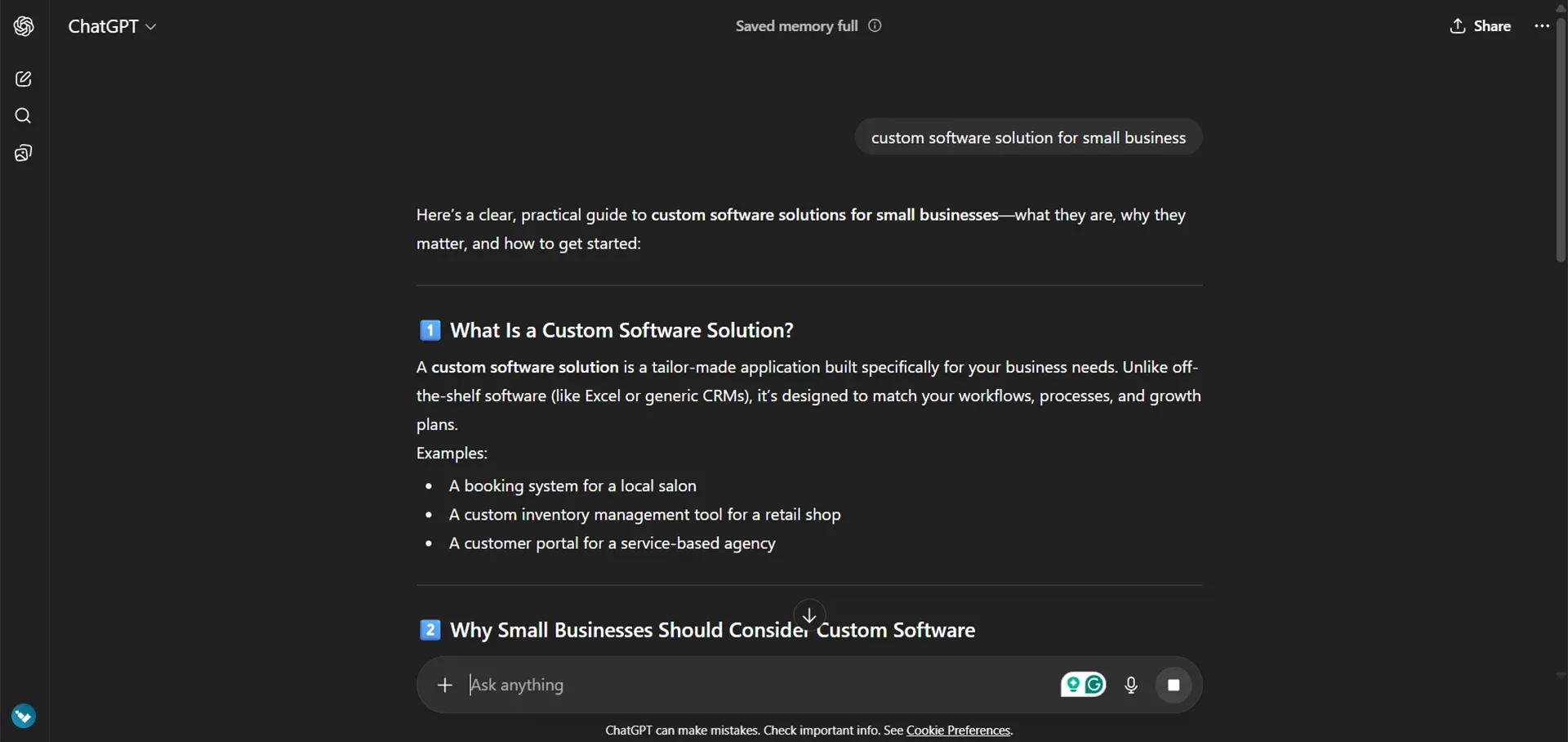
2. Google Gemini – Best for Web Productivity
If most of your work is done in Docs, Sheets, and Gmail, then you can use Google Gemini, because Gemini is integrated with all Google products, whether it is your mail or Google Docs. And it can automatically summarize reports, writings, emails and apart from this, it is also a very helpful platform for visual presentations.
- Strengths: Gemini has data and support of the world's largest search engine, due to which you get in-depth results, and it is integrated with almost all Google office tools, which makes it a very good option for coding and data analysis. Its only limitation is that it is popular because of Google’s support, not because of its capabilities.
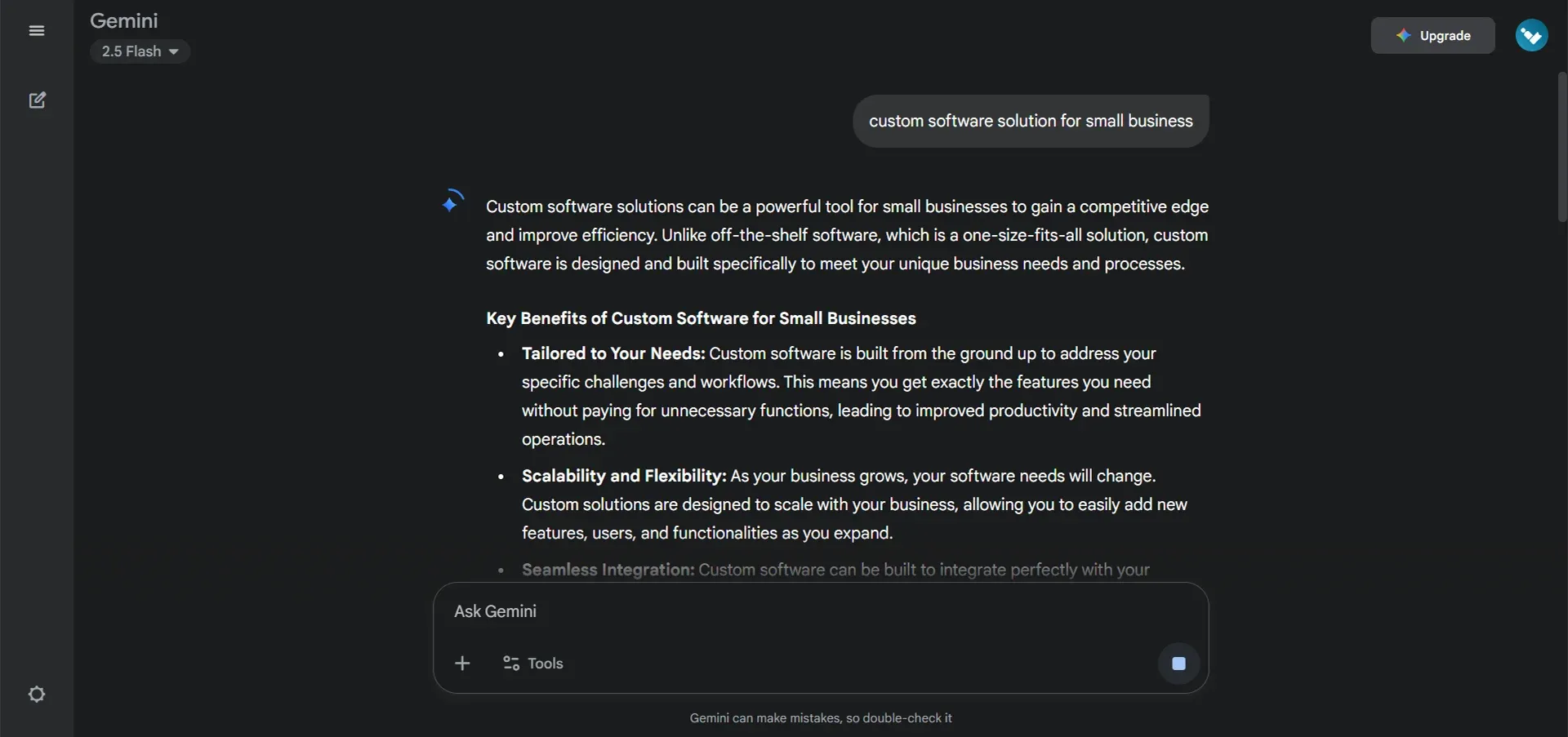
3. Claude (Anthropic) – Best for Content Creation
If you are a writer, marketer, or strategist, you may prefer Anthropic’s Claude because it supports a very calm, human-like tone and powerful long-form writing skills. It can also analyse huge documents. Apart from this, it can also generate and polish blog posts. It is known for its consistent writing, so you can choose it to maintain the consistency of your brand voice.
- Why use it: Claude AI’s nuanced reasoning and large-context understanding are much better. Apart from this, its overall interface is also very simple to use, and it has been created with a focus on Anthropic’s Constitutional AI, due to which it is known for its safe and ethical output.

4. Perplexity – Best for Deep, Source-Backed Research
Whenever I need fast citation-rich answers, I use Perplexity as it is the best option for me for quick checks. You can think of it as a powered librarian that uses real-time sources to give you results with proper citations, which saves you a lot of time. You can use Perplexity for research and quick checks.
- Highlights: Perplexity is known for its pro search or collaborative knowledge sharing, and it has the ability to upload documents and get summarization results instantly.
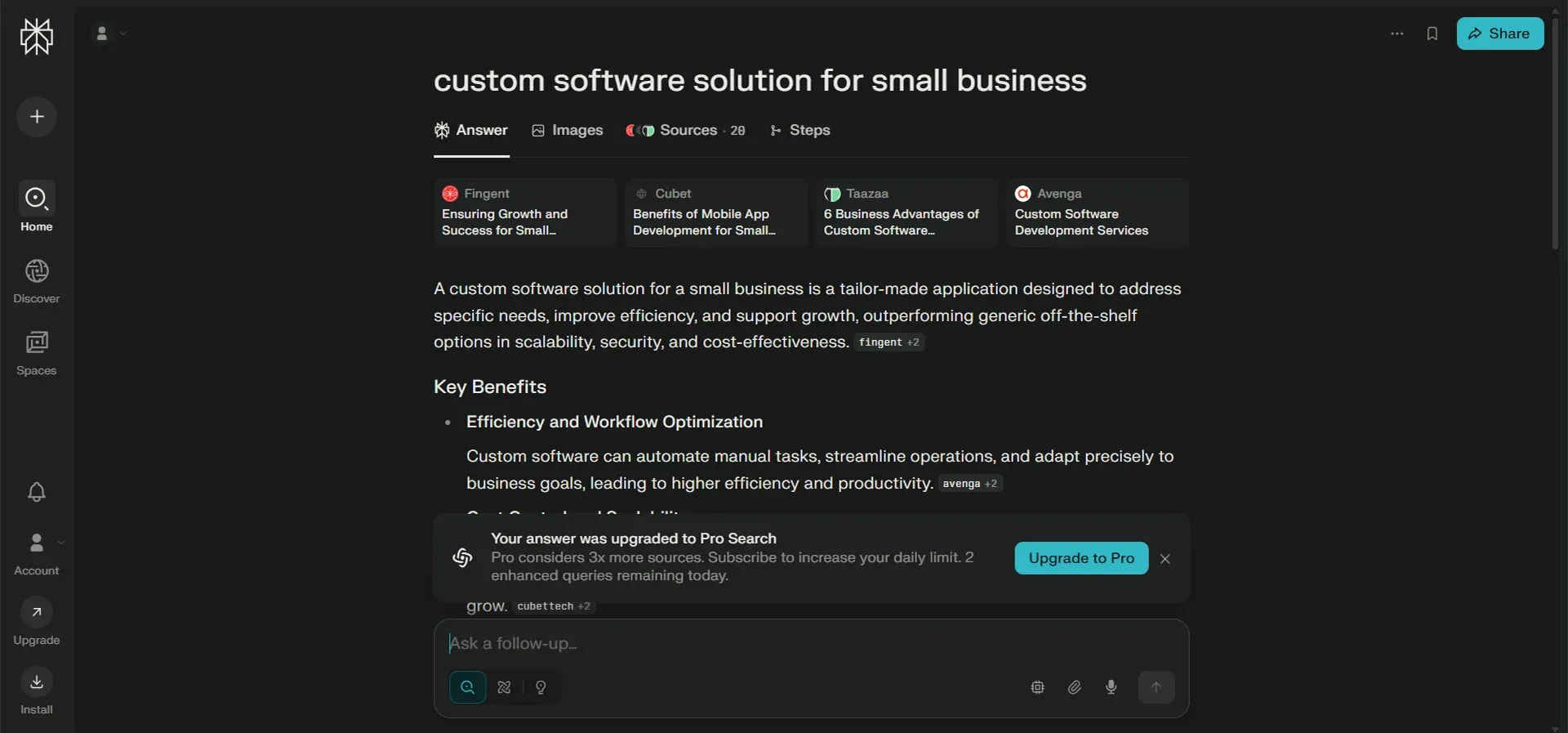
Also Read: AI Agent vs AI Chatbot - What is the Main Difference
5. DeepSeek – Best Open-Source & Developer-Friendly
If you are a developer or a journalist, you can use Deepseek because its core focus is on transparent results. In Deepseek, you get reasoning modes that you can use to solve complex problems step by step. DeepSeek uses a chain of thoughts (CoT), due to which its overall accuracy remains quite high.
- What it brings: DeepSeek's (DeepSeek-V3, R1) models are quite cost-effective compared to other LLM models. It also has an MIT open-source flexibility license, and you will also get the support of strong multilingual capabilities. The only problem I had with Deepseek is that it is not perfect for non-technical users, as its interface may seem less polished, but it is best for professionals.
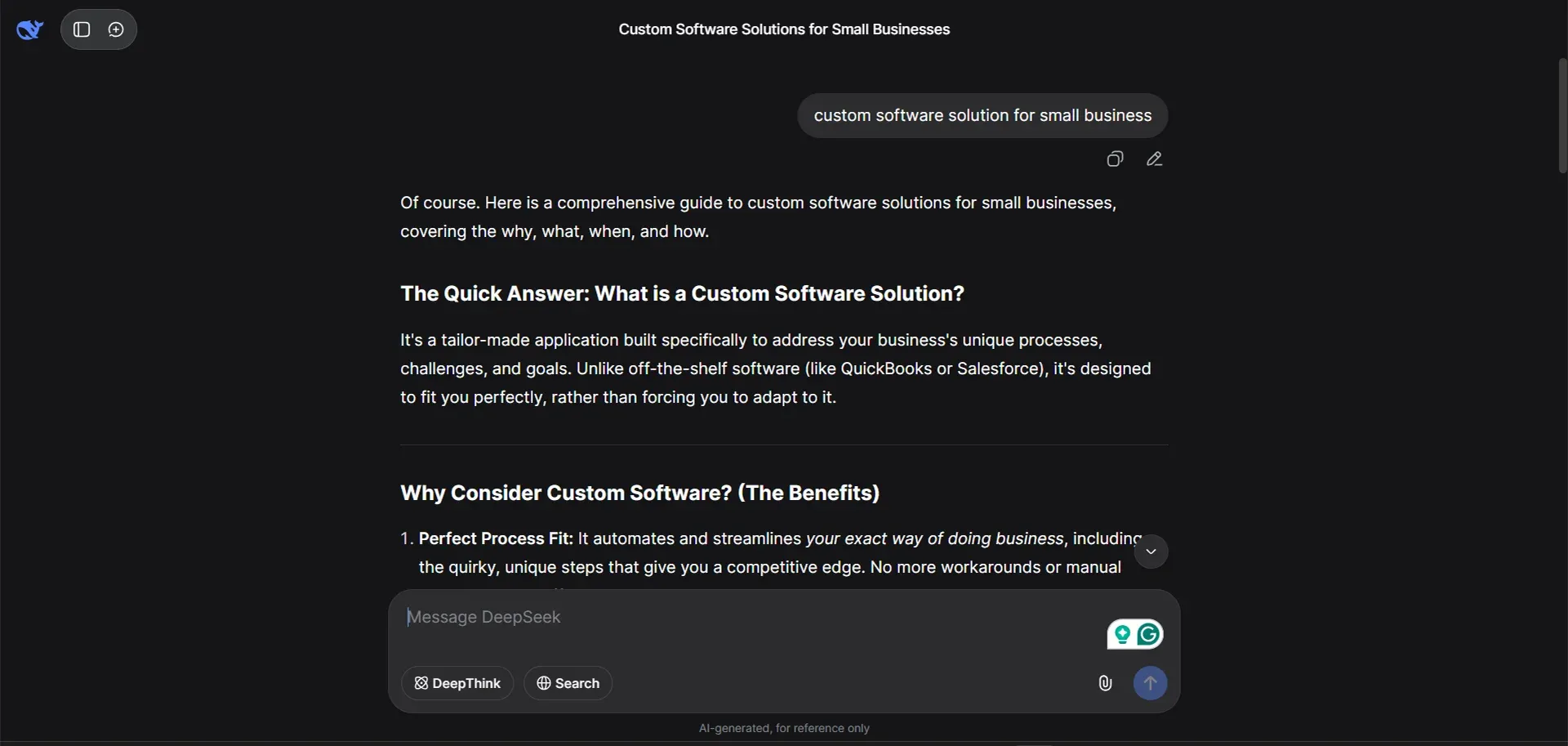
6. Breeze (by HubSpot) – Best for Personalized Customer Support
If you are already using HubSpot with your business operations or CRMs, then you can choose their Breeze Assistant, as it will be integrated with the complete system, with the help of which it will automate your meeting preparation. Apart from this, it can also summarise your contacts and suggest smart content.
- Advantages: It is designed for HubSpot’s CRM ecosystem, due to which it has a lot of in-depth knowledge of business operations and using it, you can automate sales, and it also provides hyper-personalised support in analysis. Its only downside is that it can only perform well in the HubSpot ecosystem.
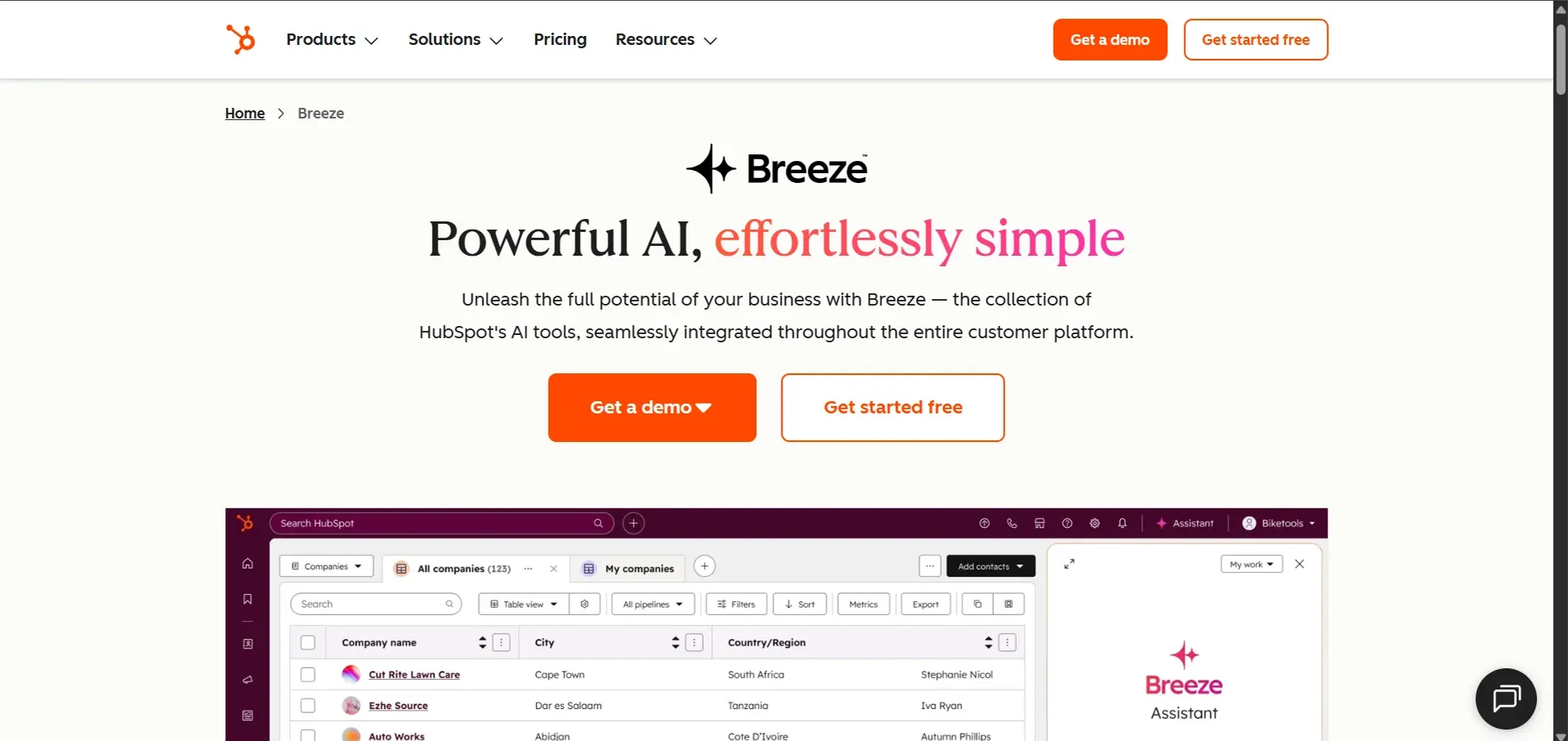
7. Microsoft Copilot – Best for Microsoft Power Users
If you use Microsoft 365 or free Office tools on a daily basis in your workflow, then you can use Microsoft Copilot, as it can do everything from drafting Word documents to generating visualizations. Apart from this, it can summarize Teams meetings and also support seamless integration with different Microsoft software.
- Why it works: Microsoft Copilot lets you see enterprise-level compliance, using which you can generate real-time context-aware prompts effortlessly. This is why Copilot is best known for its office-heavy environments. Its only drawback is that it is not as flexible outside of Microsoft.
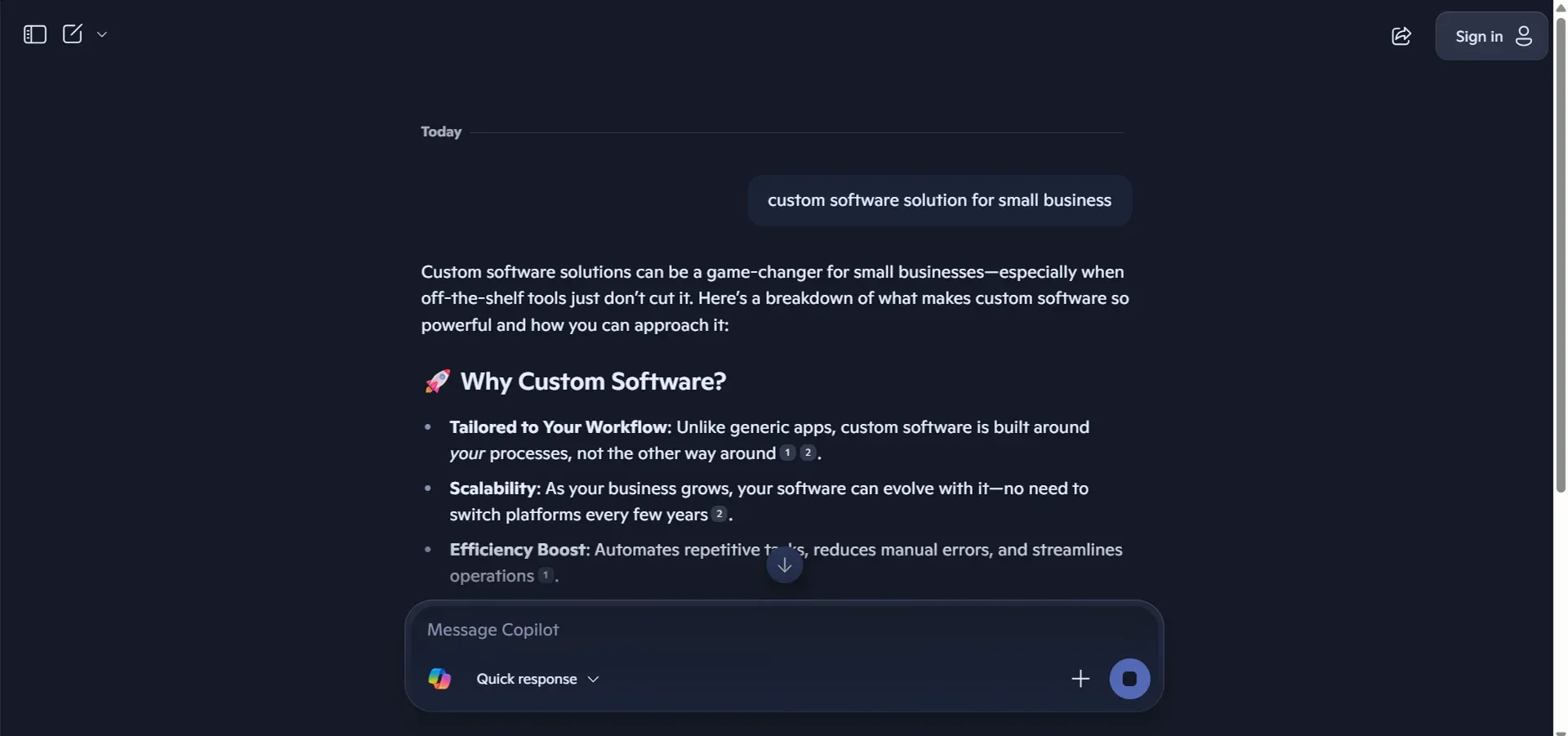
Quick Comparison Table: Features, Pricing & Best Use Cases
Let us now break down all the top chatbots and their core features, use cases, and pricing.
| Chatbots | Best For | Key Features | Pricing |
|---|---|---|---|
| ChatGPT | Complex Tasks | Multimodal GPT-4o, Project file storage | Free and Pro plans start from $20 per month |
| Gemini | Web productivity | Google Workspace Integration and Multimodal Features | Free tier and advanced features start at $19.99 per month |
| Claude | Content creation | Large context and safe output | Their Free and Pro plans vary |
| Perplexity | Deep Research | It provides Source citations and Pro search modes | The monthly plan starts at $20 per month |
| Deepseek | For Developers | Open source and CoT reasoning | This platform is mostly free, and it also provides low-cost API access. |
| Breeze by Hubspot | Hubspot users | CRM native automation | For this, you will require a HubSpot subscription |
| Microsoft Copilot | MS 356 Power Users | Best for office integration and data analysis | You will get some features for free, and their monthly premium plan starts at $30 per month |
How to Choose the Right AI Chatbot for You
Choosing the perfect AI chatbot starts with analysing your business use cases. You have to think about what purpose you need AI Chatbots, like whether you want to use a Chatbot for content creation or for customer support. Let me tell you about the personal factors that led me to choose an AI Chatbot or tool.

- Evaluate ecosystem compatibility: If most of your work is done in Google Workspace, then you can prefer Google Gemini. Apart from this, if your business is heavily dependent on HubSpot, then you should prefer Breeze; always choose an AI that supports your ecosystem.
- Check pricing & accessibility: Budget is a very important factor while choosing AI chatbots, so always choose Chatbots with features balanced with budget.
- Prioritize must-have features: In today's competitive world, try to choose an AI chatbot that provides Multimodal input, Source citations and Developer access so that you do not have to use multiple tools for your different tasks.
- Test multiple platforms: Before subscribing to any chatbot, use it for a week through free trials and check its accuracy so that you do not regret it later.
Common Mistakes to Avoid When Choosing AI Chatbots
Many beginners make some common mistakes while choosing AI chatbots, due to which their ROI remains very low.
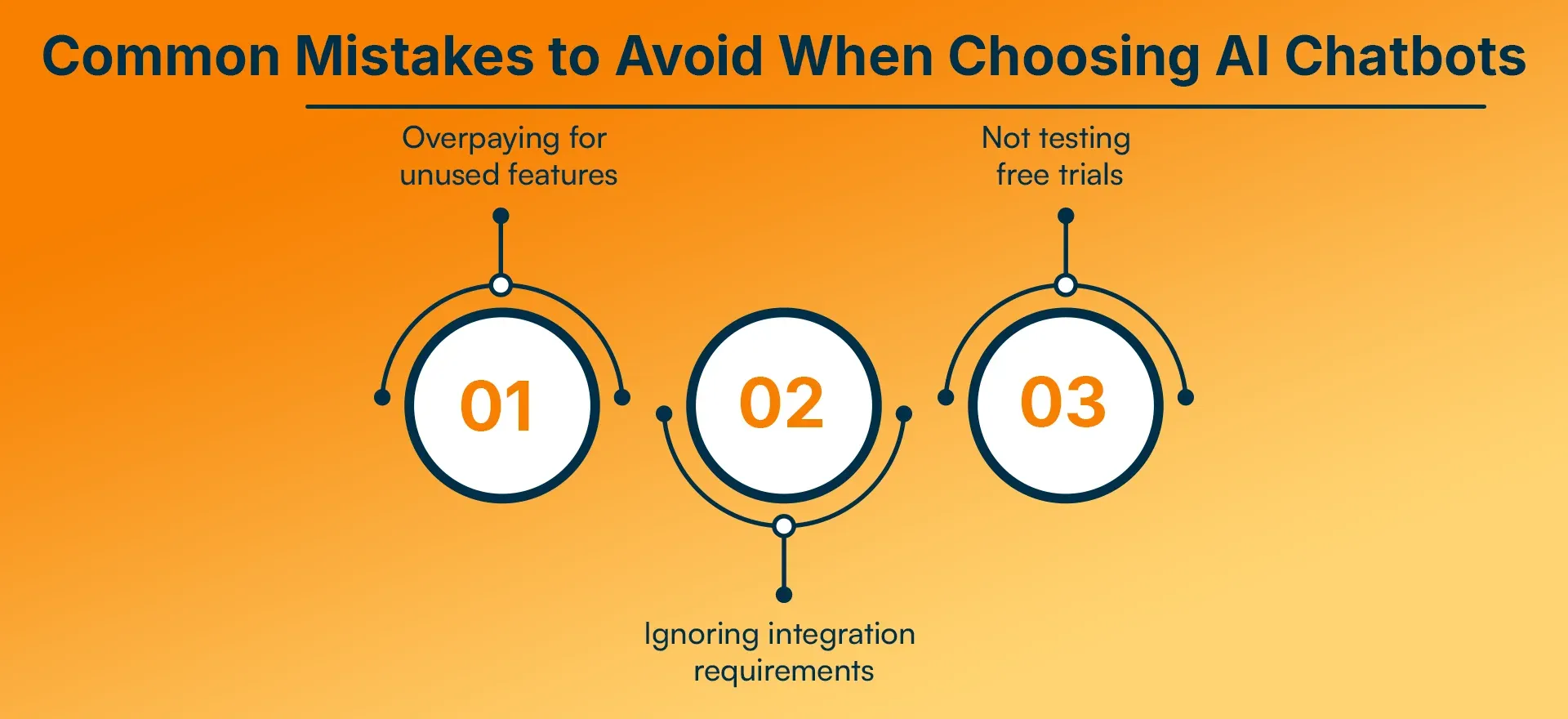
- Overpaying for unused features: Never prefer a chatbot on the basis of its advertisement. Always test that platform yourself for a week, and only after that, then you should subscribe to it, if you feel that your chatbot is worth it.
- Ignoring integration requirements: There is no benefit to such Chatbots which are not compatible with your existing tools and ecosystem.
- Not testing free trials: Never choose any such Chatbot which does not offer a free trial, because subscribing to any tool or platform without using it personally is a very foolish behaviour.
Future Trends in AI Chatbots
We have learned a lot about AI Chatbots. Let us now learn about the future trends of Chatbots. Personally, I get to see 3 important trends of AI Chatbots.

- Multimodal AI: Currently, whatever AI Chatbot is available, its input/output system will be further enhanced for video, images, and even AR/VR.
- Hyper-personalization: Future Chatbots will be capable of delivering highly personalized results, and these models will be able to adapt themselves according to user habits.
- Integration with AR/VR: Future Chatbots will support more conversational systems and will try to evolve user-friendly environments in more detail so that most users can use AI chatbots.
Conclusion
Chatbots have been evolving rapidly in the last 5 years, and this industry is also growing a lot. In today's competitive world, Chatbots are not only used to save cost and time, but it is also used to enhance and smooth customer experience and operations.
So whether you are a developer, marketer, or enterprise leader, AI chatbots will definitely prove to be very useful for you. Apart from this, if you are still confused about which AI chatbot or software should be used for your business, then you can contact the RejoiceHub firm, which will prove to be very helpful in solving your business operations.
Frequently Asked Questions
1. What makes AI chatbots different from traditional chatbots?
AI chatbots use large language models to dynamically generate human-like responses. Those that are rule-based follow a fixed path but keep changing according to the situation and input.
2. Which AI chatbot is most powerful in 2025?
At present, ChatGPT-4 and Cloud 3 are the most advanced reasoning-based platforms that are quite helpful in basic conversations as well as complex tasks.
3. Are there free AI chatbots worth using?
Yes, ChatGPT and Gemini both provide free trials and usage, and you can use them for your daily tasks.
4. How secure are AI chatbots for business use?
Most top AI platforms like Copilot, Gemini, and ChatGPT are considered quite safe as they comply with privacy standards such as GDPR, ensure encryption and also support secure data handling.
5. Can AI chatbots handle multiple languages?
You can use DeepSeek and Cloud for multilingual support, and it also supports global businesses.
6. What industries benefit the most from AI chatbots?
There are many industries that have benefited a lot from AI chatbots, such as customer service, e-commerce, healthcare, finance, and education. Chatbots increase efficiency and 24/7 engagement for businesses.
7. What’s next for AI chatbot technology?
AI Chatbots will support more multimodal interactions in the future, and these Chatbots will support deeper personalisation and tighter integration. Besides, virtual and augmented reality experiences will also have evolved a lot.
